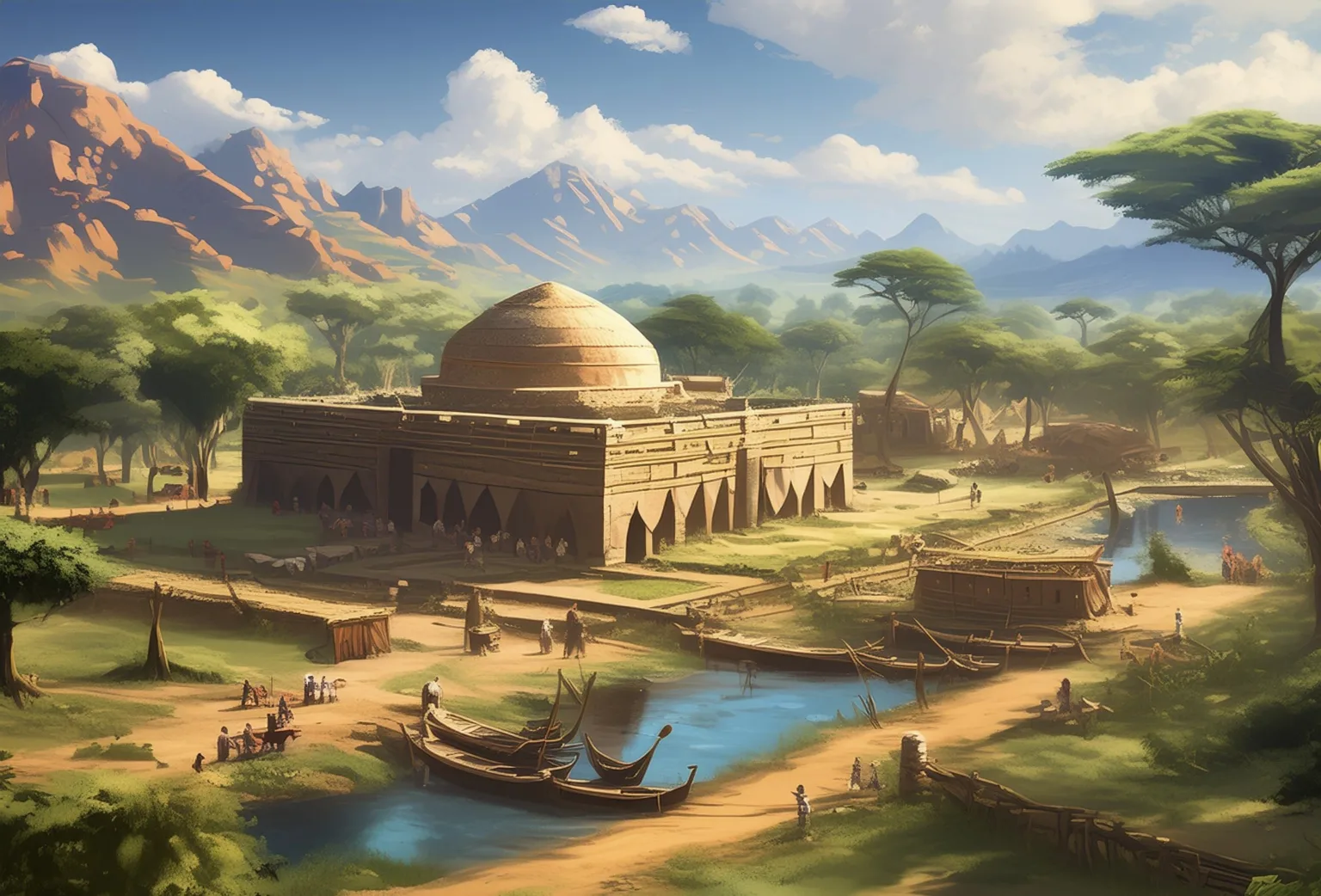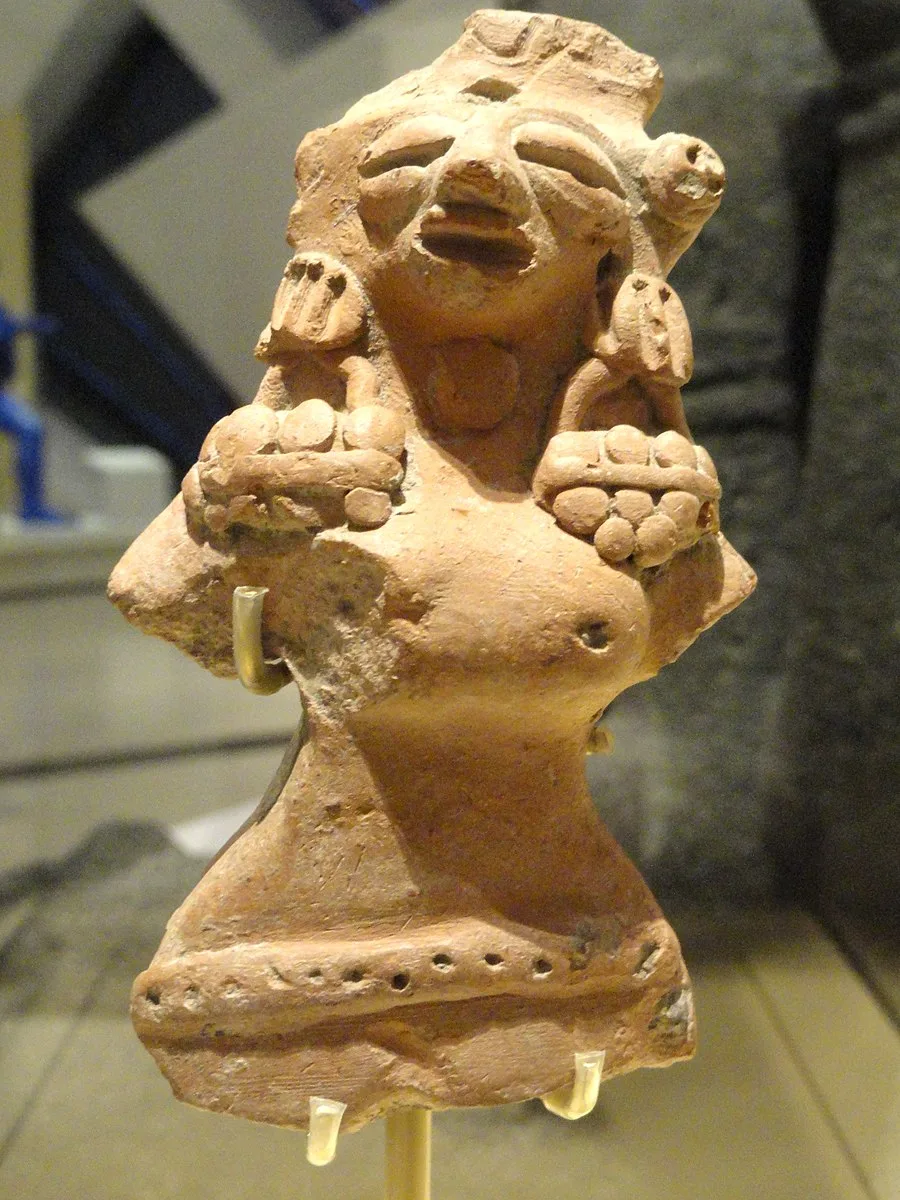Never heard of the Indus Valley Civilization? The Indus Valley Civilization, also known as the Harappan Civilization, is one of the oldest and most fascinating ancient civilizations in the world. Flourishing around 3300 BCE to 1300 BCE, it thrived in the fertile plains of the Indus River and its tributaries in what is now modern-day Pakistan and northwest India. Wanna know more? Find out more in this article!
Overview
Geographical Location
The geographical location of the Indus Valley Civilization played a crucial role in its development and prosperity. The civilization was spread across a vast area of around 1.25 million square kilometers, making it one of the largest ancient civilizations. The major sites of the civilization, including Harappa, Mohenjo-Daro, and Dholavira, were strategically located near the Indus River and its tributaries, which provided abundant water supply for agriculture and trade.
The fertile plains of the region supported a thriving agricultural economy, with the cultivation of wheat, barley, peas, and cotton. The Indus River also served as a key transportation route for trade, connecting the civilization to other regions in the Indian subcontinent and beyond. The strategic location of the civilization facilitated cultural exchange and trade with neighboring regions, leading to the development of a sophisticated urban society.
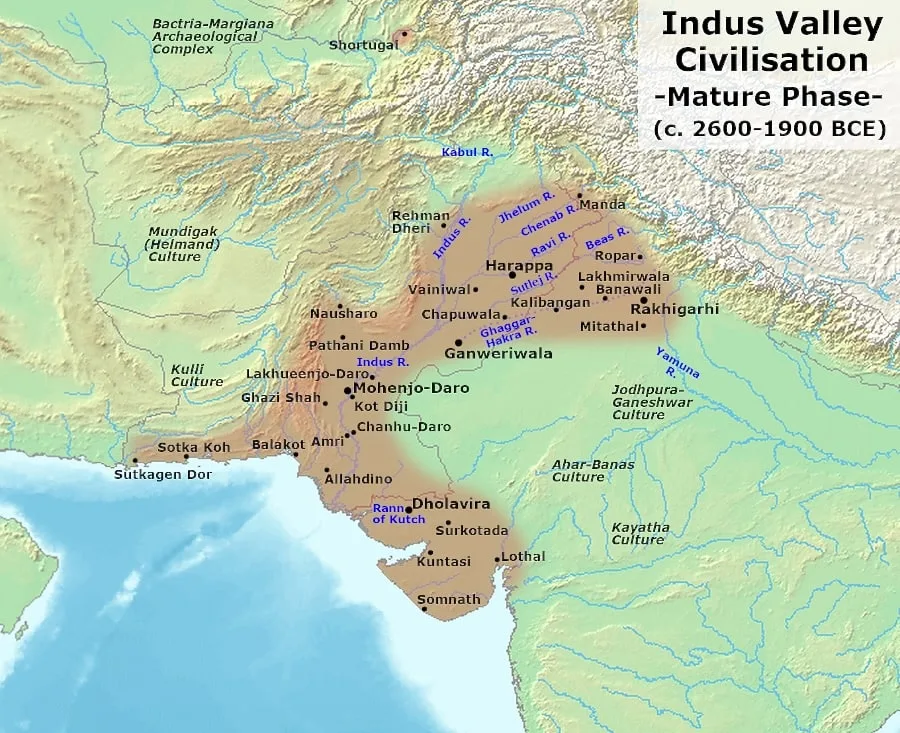
Time Period
The timeline of the Indus Valley Civilization spans approximately from 3300 BCE to 1300 BCE, although the exact dates are subject to ongoing research and debate among archaeologists and historians. The civilization reached its peak around 2600 BCE to 1900 BCE, during which time it witnessed remarkable advancements in urban planning, architecture, and craftsmanship.
The decline of the civilization around 1900 BCE to 1300 BCE is shrouded in mystery, with various theories proposed by scholars, including environmental factors, natural disasters, and invasions. The sudden disappearance of the Indus Valley Civilization has sparked intrigue and speculation, making
Major Cities and Sites
1. Dholavira
Dholavira, located in present-day Gujarat, India, is one of the five largest Harappan sites and showcases the urban sophistication and architectural prowess of the Indus Valley Civilization. The city features a unique water management system, intricate fortifications, and well-defined residential and industrial zones. Excavations at Dholavira have revealed a wealth of artifacts, including seals, pottery, and jewelry, shedding light on the economic activities and cultural practices of its residents.
2. Harappa
Harappa is one of the most well-known and extensively excavated sites of the Indus Valley Civilization. Located in present-day Punjab, Pakistan, Harappa was a major urban center with a sophisticated urban layout, advanced drainage system, and intricately planned streets. The discovery of seals, pottery, and artifacts at Harappa has provided valuable insights into the daily life, trade networks, and social organization of the ancient Harappan people.
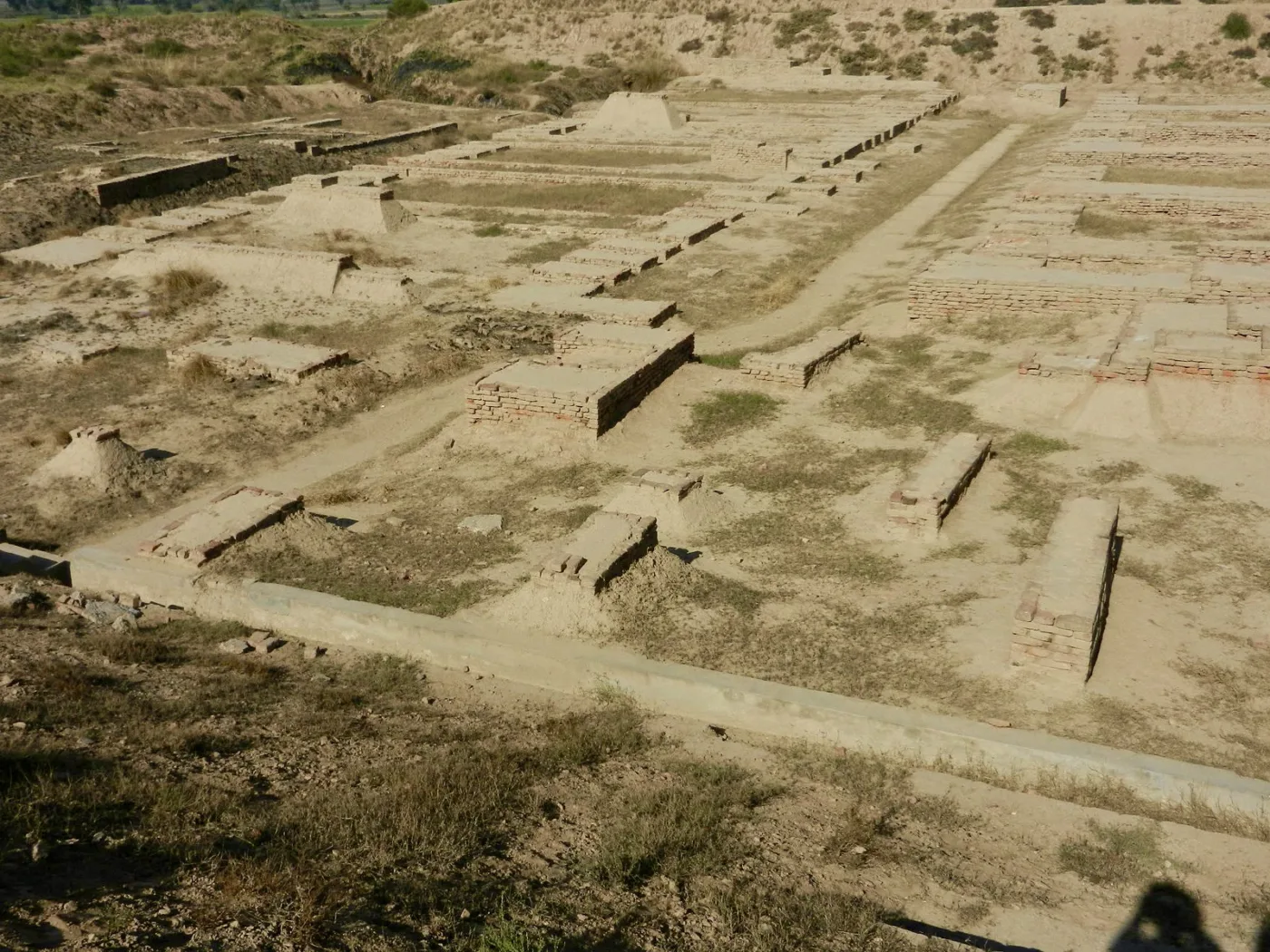
3. Mohenjo-Daro
Mohenjo-Daro, meaning “Mound of the Dead,” is another prominent city of the Indus Valley Civilization. Situated in the Sindh province of Pakistan, Mohenjo-Daro was a bustling metropolis with impressive architecture, including the Great Bath, granaries, and well-planned residential areas. The city’s advanced urban planning and sophisticated drainage system are testaments to the ingenuity and engineering skills of its inhabitants.
4. Lothal
Lothal, situated in modern-day Gujarat, India, was a thriving port city of the Indus Valley Civilization and a hub of maritime trade. The city’s strategic location along the ancient course of the Sabarmati River facilitated trade with other regions, making it a significant center for commerce and maritime activities. Excavations at Lothal have uncovered a well-organized dockyard, warehouses, and evidence of a sophisticated bead-making industry, highlighting the economic prosperity and technological advancements of the Harappan people. The meticulous planning of the city’s layout, including its residential areas, marketplace, and public structures, reflects the urban planning expertise of the Indus Valley Civilization.
Economic Life of the Indus Valley Civilization
The Indus Valley Civilization, also known as the Harappan Civilization, was renowned for its advanced urban planning, sophisticated architecture, and robust trade networks. The economy of this ancient civilization was primarily based on agriculture, with the fertile lands along the Indus River supporting the cultivation of various crops such as wheat, barley, and cotton.
One of the most remarkable features of the Indus Valley Civilization was its well-planned cities, with intricate grid patterns, advanced drainage systems, and multi-story buildings. The presence of granaries and warehouses in these cities suggests a well-organized system of storing and distributing agricultural produce.
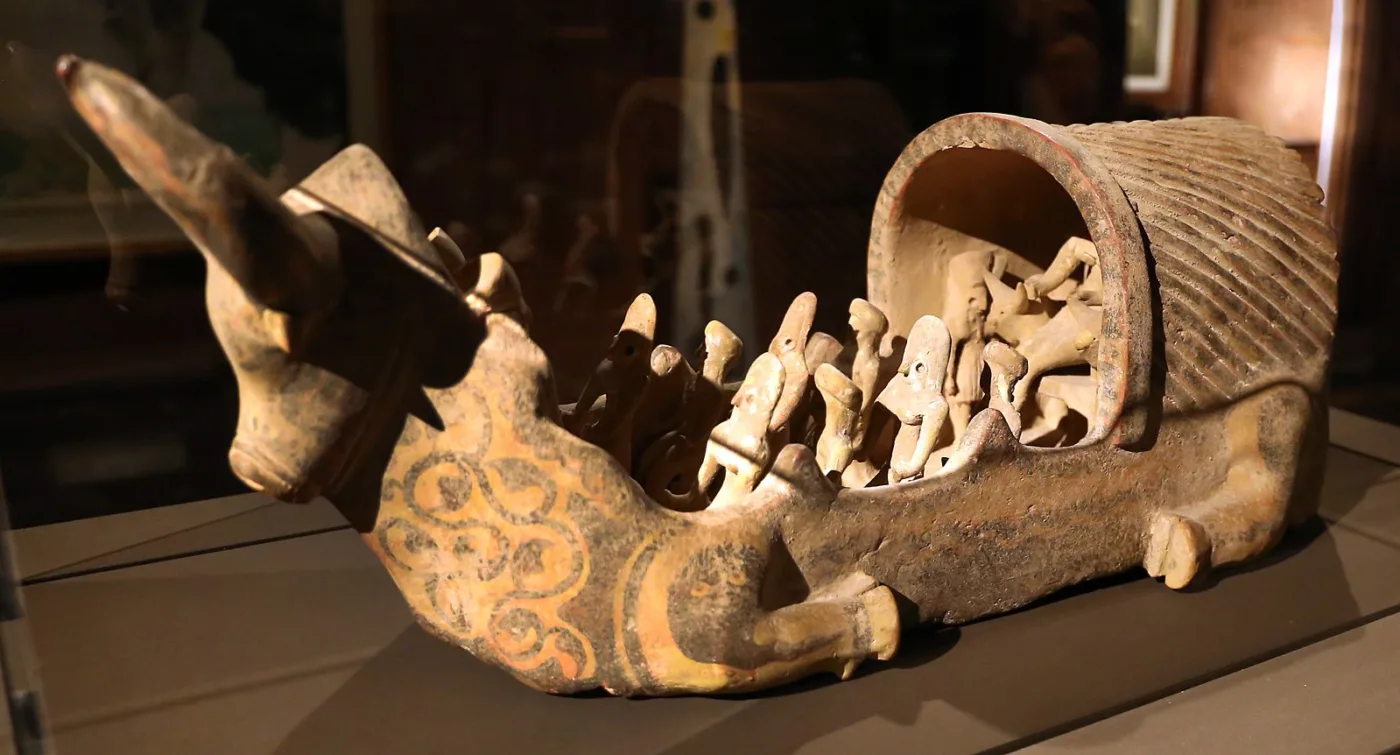
The Indus people were skilled artisans and craftsmen, producing exquisite pottery, jewelry, and seals that were traded both within the civilization and with distant lands. The discovery of seals with inscriptions in the yet-to-be-deciphered Indus script indicates a sophisticated system of trade and communication.
Social Life of the Indus Valley Civilization
The social structure of the Indus Valley Civilization was believed to be relatively egalitarian, with no evidence of monumental architecture or tombs indicating the presence of a ruling elite. The cities were characterized by a high degree of urban planning and uniformity in architecture, suggesting a well-organized society with shared values and beliefs.
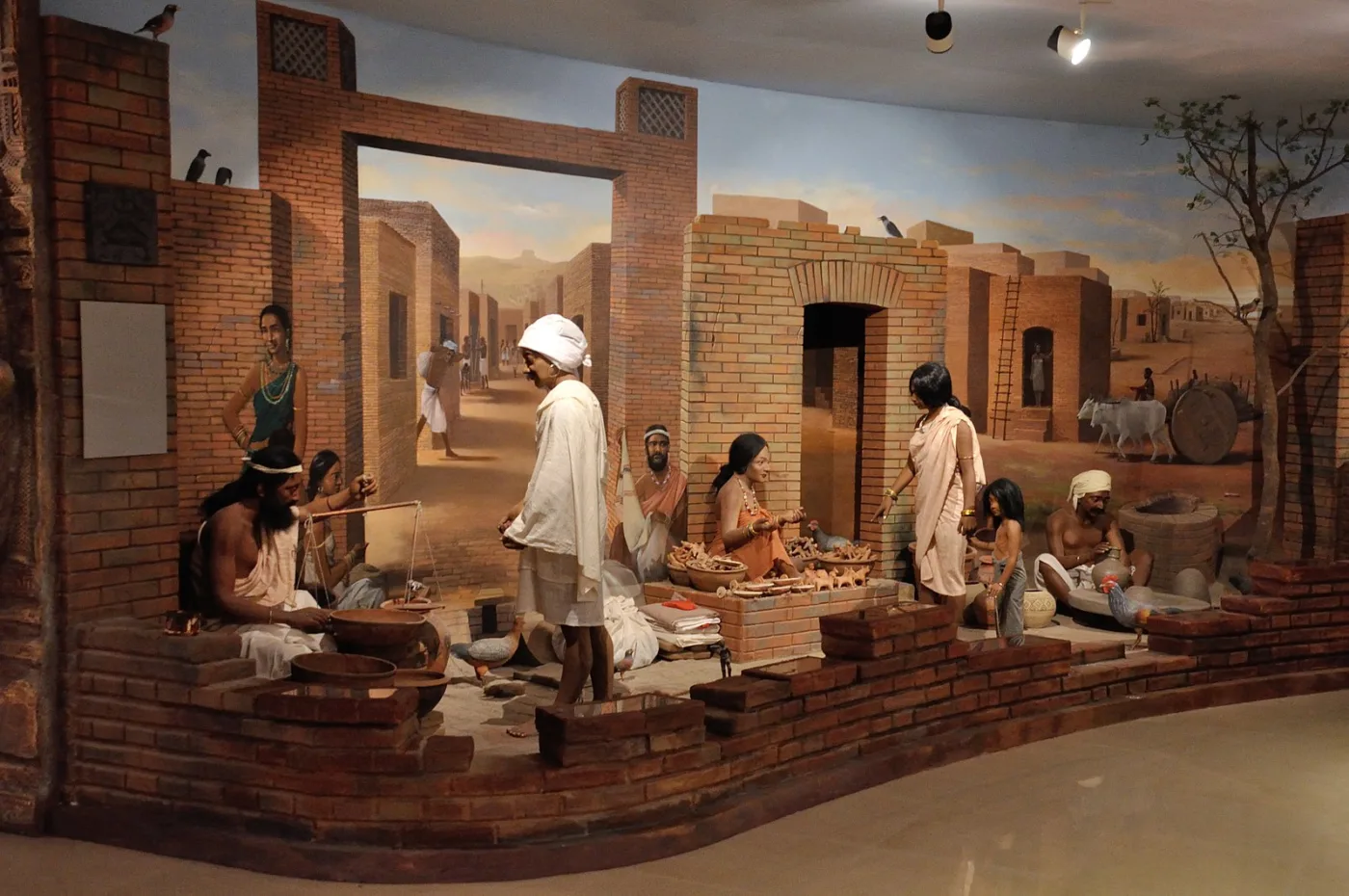
The discovery of seals with animal motifs and human-like figures has led archaeologists to speculate about the religious beliefs and practices of the Indus Valley Civilization. The presence of public baths and a remarkable system of sanitation in the cities hints at a society that valued hygiene and communal well-being. Further excavation and analysis of artifacts continue to provide valuable insights into the daily lives, customs, and traditions of this ancient civilization, offering a glimpse into a world that thrived thousands of years ago along the banks of the mighty Indus River.
Architectural Marvels of the Indus Valley Civilization
The Indus Valley Civilization is also renowned for its advanced urban planning and architectural achievements. The cities of Mohenjo-Daro and Harappa are prime examples of the civilization’s expertise in city planning. The carefully laid out streets, well-planned drainage systems, and multi-storied houses reflect the sophistication of these ancient urban centers.
One of the most intriguing architectural features of the Indus Valley Civilization is the Great Bath in Mohenjo-Daro. This large, rectangular tank lined with bricks and fitted with a sophisticated drainage system is believed to have had ritualistic and ceremonial significance. Its design and functionality showcase the engineering prowess of the civilization.
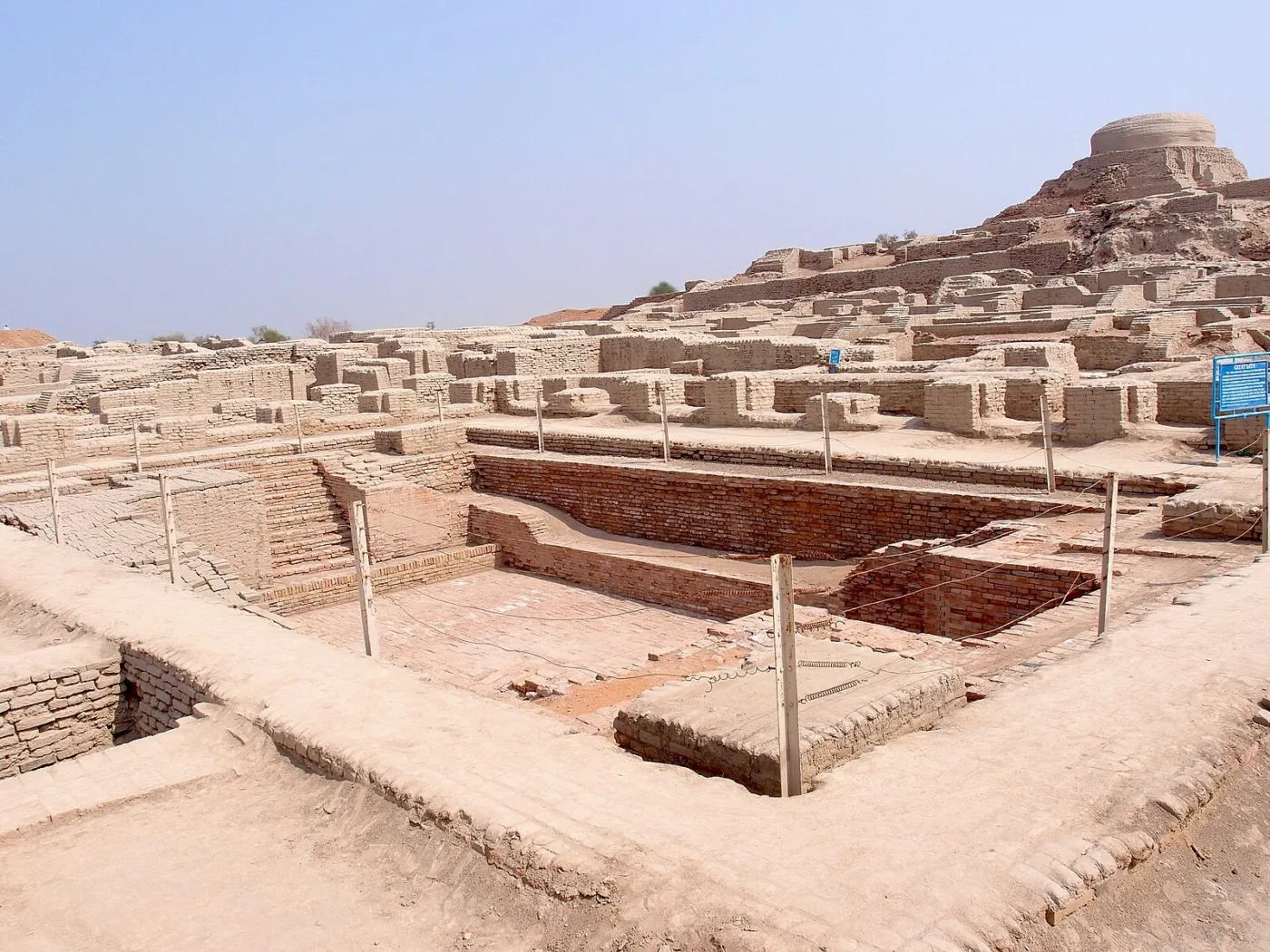
Legacy of the Indus Valley Civilization
Despite its remarkable achievements in art and architecture, the Indus Valley Civilization remains enigmatic in many aspects, with numerous questions still unanswered. Scholars continue to delve into the intricacies of their writing system, social structure, and reasons for the eventual decline of this once flourishing civilization. By piecing together the fragments of artifacts, structures, and clues left behind, we inch closer to unlocking the mysteries that surround this ancient society and gaining a deeper understanding of its significance in the broader context of human history.
The Indus Valley Civilization, one of the world’s oldest urban civilizations, flourished around 3300-1300 BCE in what is now modern-day Pakistan and northwest India. Known for its advanced urban planning, sophisticated drainage systems, and intricate pottery and jewelry, the civilization suddenly declined, leaving archaeologists and historians puzzled.
Decline of the Indus Valley Civilization
Theories and Speculations
1. Environmental Factors
One popular theory suggests that environmental factors played a significant role in the decline of the Indus Valley Civilization. Some researchers believe that a shift in the course of the Indus River, either due to tectonic activity or climate change, may have disrupted the agriculture-based economy of the civilization. This could have led to crop failures, famine, and ultimately the collapse of the society.
2. Aryan Invasion
Another theory proposes that the Indus Valley Civilization was invaded and conquered by nomadic Indo-European tribes known as the Aryans. This invasion, around 1500 BCE, is believed to have caused widespread destruction and displacement of the indigenous population, ultimately leading to the decline of the civilization.
3. Internal Conflict and Social Collapse
Some scholars argue that internal factors such as social unrest, political instability, or economic inequality could have contributed to the downfall of the Indus Valley Civilization. Evidence of abandoned cities, signs of violence, and a lack of centralized authority support this theory of a societal collapse from within.
Possible Causes
1. Economic Decline
The reliance of the Indus Valley Civilization on agriculture and trade made them vulnerable to economic fluctuations. A disruption in trade routes, depletion of natural resources, or overexploitation of land could have contributed to an economic decline, leading to social upheaval and ultimately the collapse of the civilization.
2. Climate Change
Recent studies have suggested that climate change, particularly a shift in monsoon patterns, may have played a significant role in the decline of the Indus Valley Civilization. Changes in rainfall patterns and drought conditions could have severely impacted agricultural productivity, leading to food shortages and societal stress. The inability to adapt to these changing environmental conditions, coupled with other factors like resource depletion and external pressures, may have collectively contributed to the unraveling of this once prosperous civilization. The exact reasons behind the decline of the Indus Valley Civilization remain a subject of ongoing debate and research within the archaeological and historical communities.
Legacy of the Indus Valley Civilization
Influence on Indian Culture
The Indus Valley Civilization was a melting pot of diverse cultures, languages, and traditions. Its sophisticated urban planning, advanced drainage systems, and intricate grid layout of cities like Mohenjo-Daro and Harappa showcased a level of organization and civic planning that was unparalleled at that time.
One of the most enduring legacies of the Indus Valley Civilization is its contribution to the development of Indian religions. The seals found at archaeological sites depict various deities, animals, and symbols that are believed to have laid the foundation for Hinduism, Buddhism, and other religious practices in the region.
The Indus Valley people were also skilled artisans and craftsmen, evident in the exquisite pottery, jewelry, and figurines discovered at excavation sites. Their artistic prowess and attention to detail continue to inspire modern Indian artisans and designers, influencing the aesthetics of Indian art and architecture.
Impact on Subsequent Civilizations
The decline of the Indus Valley Civilization around 1900 BCE did not mark the end of its influence. As the civilization faded into obscurity, its cultural and technological advancements spread to neighboring regions and laid the groundwork for subsequent civilizations.
The trade networks established by the Indus Valley people connected them with Mesopotamia, Egypt, and other ancient civilizations, facilitating the exchange of ideas, goods, and technologies. The Indus script, though still undeciphered, is believed to have influenced the development of writing systems in the region.
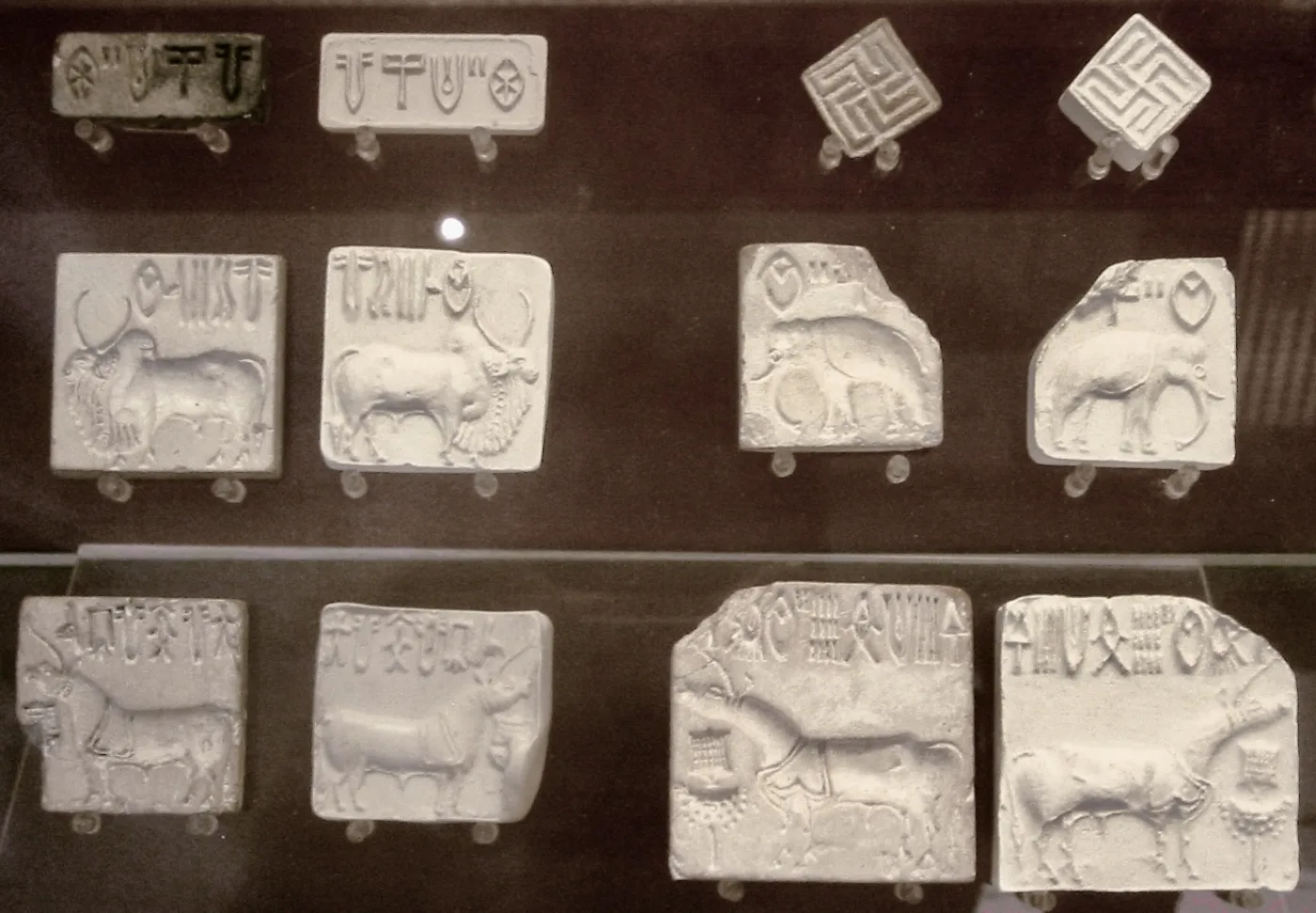
The concept of urban planning and sanitation practices introduced by the Indus Valley Civilization found echoes in later civilizations, shaping urban development and infrastructure management in South Asia and beyond. The grid layout of cities and advanced drainage systems pioneered by the Indus Valley people set a precedent for future city planners and architects, influencing the design of cities across the Indian subcontinent and beyond. Moreover, the emphasis on civic planning and public welfare seen in the remains of Harappa and Mohenjo-Daro has left a lasting impact on the principles of city governance and community living in modern societies. The timeless legacy of the Indus Valley Civilization serves as a testament to the ingenuity and cultural richness of ancient Indian civilization, resonating through the corridors of history to inspire generations to come.
Recent Discoveries and Ongoing Research
1. New Findings
In recent years, archaeologists have made several groundbreaking discoveries that have reshaped our understanding of the Indus Valley Civilization. One of the most significant findings is the discovery of a vast urban settlement in the city of Rakhigarhi, believed to be the largest site of the civilization. Excavations at Rakhigarhi have revealed well-planned streets, advanced drainage systems, and evidence of a sophisticated urban civilization.
Furthermore, recent excavations at sites like Dholavira and Harappa have uncovered intricately designed seals, pottery, and tools that provide valuable insights into the art, trade, and daily life of the Indus Valley people. These artifacts suggest a highly organized society with a thriving economy and a sophisticated understanding of craftsmanship.
2. Technologies Used in Archaeological Excavations
The field of archaeology has witnessed significant advancements in technology, enabling researchers to conduct more precise and detailed excavations of Indus Valley sites. One such technology is LiDAR (Light Detection and Ranging), which uses laser pulses to create highly accurate 3D maps of archaeological sites. LiDAR has been instrumental in uncovering hidden structures and urban layouts at various Indus Valley sites.
Additionally, archaeologists have utilized techniques like ground-penetrating radar and drone surveys to identify buried structures and artifacts without disturbing the site’s integrity. These non-invasive methods have revolutionized the field of archaeology, allowing researchers to uncover new information about the Indus Valley Civilization without causing damage to the ancient remains.
As ongoing research continues to unravel the mysteries of the Indus Valley Civilization, it is becoming increasingly clear that this ancient civilization was far more advanced and complex than previously believed. The integration of new technologies and innovative excavation methods has opened up new avenues for exploration and interpretation, providing a deeper understanding of the cultural, social, and technological achievements of the people who inhabited the ancient Indus Valley. As researchers continue to unearth new findings and analyze existing data, the enigmatic past of this civilization slowly begins to reveal its secrets, offering a glimpse into a sophisticated society that thrived thousands of years ago.
More of → Ancient Civilizations ←
FAQ
1. What is the Indus Valley Civilization?
The Indus Valley Civilization was an ancient society that lived in parts of modern-day India and Pakistan. They built cities and had a clever system of drainage and sanitation.
2. How did people in the Indus Valley Civilization live?
People in the Indus Valley Civilization lived in well-planned cities like Mohenjo-Daro and Harappa. They had houses made of bricks and were skilled in farming and trade.
3. Did the Indus Valley people have a written language?
Yes, the Indus Valley people had a writing system, but we haven’t fully figured out how to read it yet. Archaeologists have found many seals and inscriptions with their writing on it.
4. What did the Indus Valley Civilization trade?
The people of the Indus Valley Civilization traded goods like pottery, jewelry, and cloth. They traded with nearby civilizations like Mesopotamia.
5. Why did the Indus Valley Civilization decline?
Historians aren’t sure why the Indus Valley Civilization declined, but some think it might be because of environmental changes, like floods or droughts, or maybe invasions from other groups.

